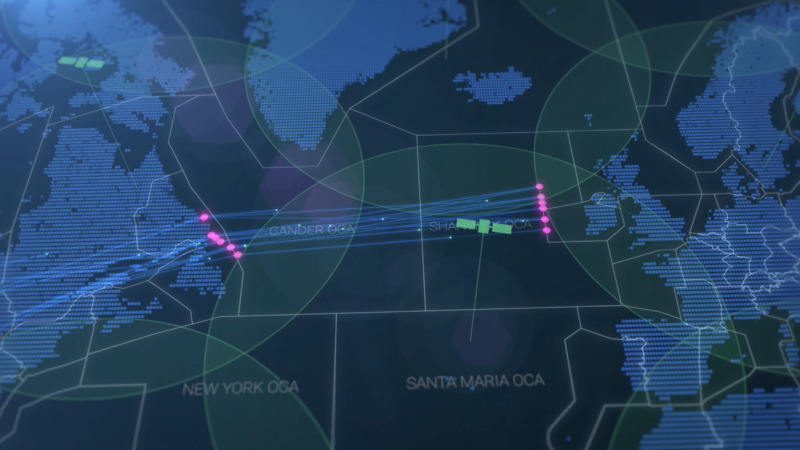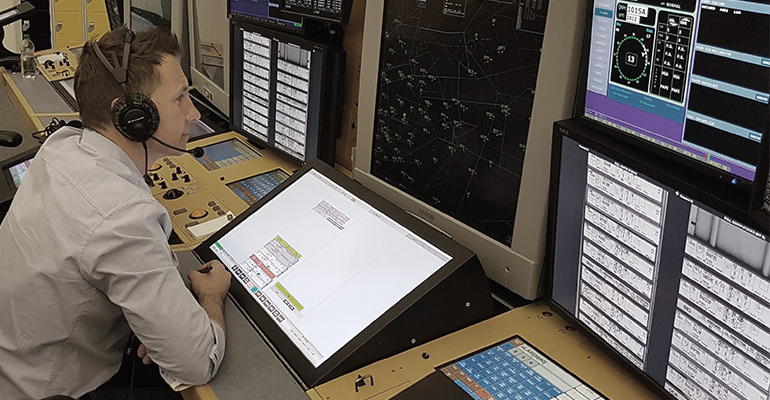In April I attended the annual IATA Ops Conference in Ottawa, where we were able to share a vision for transatlantic flights in 2025, jointly developed by us at NATS and the Canadian air traffic service, NAV CANADA.
The video we produced is aimed at an aviation audience but hopefully it gives any viewer an idea of the huge amount of work that we’re doing with NAV CANADA to transform transatlantic operations to make it safer, cleaner and far more efficient.
Today, 80% of all transatlantic traffic passes through airspace controlled by NATS, and demand is growing. By 2025, oceanic flights are predicted to have increased by 35% compared to 2015, so major changes to the way airspace is managed are needed to avoid a significant increase to the level of flight delay.
Current techniques mean most transatlantic flights are constrained by a large track structure over the North Atlantic which limits an airline’s ability to respond to changing circumstances, such as weather, meaning they can’t always fly the most fuel and carbon efficient routes. On arrival, the operation then works on a first come, first served basis, which often results in delays and the need for airborne holding.
Together with NAV CANADA we are working on a number of solutions to change this.
Collaborative working and coordination between the airlines, airports and air traffic control will enable the airlines to make flight plan changes dynamically in response to weather and other disruption factors, which will help maintain a flight’s scheduled departure and arrival times.
Technological changes at the departure airport, such uploading taxi routings direct to the cockpit, and within air traffic control centres, such as departure spacing optimisation, will help ensure that flights departs on time.
The latest aircraft navigation technology will be employed to deliver smoother and quieter climbs, good for the passenger, the airline and local communities.
At their cruising altitude, flights will enter what’s called ‘free route airspace’ where they are not constrained by an air traffic control route structure but are free to plan far more direct routes, saving time and CO2 emissions.
There will be a fundamental change to the way that traffic crossing the North Atlantic is managed. Satellite-based tools will be used to increase capacity and enhance safety, whilst also allowing aircraft to plan and fly their optimum trajectory including speed, altitude and route.
During peak demand times, flights will be allocated target times over pre-descent waypoints to stream the arriving aircraft and to minimise low level holding. Think of it as a bit like traffic calming on the motorway to help even out demand to avoid creating jams further down the road.
The latest aircraft navigation technology will also be employed to deliver smoother and quieter descents, inclusive of curved approaches where necessary to minimise distance and noise impact. This is a far cry from the Instrument Landing System technology most airports use today, where arrivals must approach the runway on a dead straight trajectory.
Final Approach separation will then also be reduced to an optimum value between individual aircraft pairs, based on their specific characteristics, improving consistency in flight times and resilience to the impact of strong winds – something that is one of the biggest causes of flight delay.
NATS’ recent announcement that they will join NAV CANADA and other air traffic providers, with a stake in Aireon – a network of 66 low Earth orbiting Iridium satellites monitoring the location of Automatic Dependent Surveillance-Broadcast (ADS-B) equipped aircraft – is one of the tangible steps we are taking to deliver this vision.
But it’s only one part of a broader vision to totally transform our oceanic and wider operation, to make flying quieter, safer, cleaner and more predictable.
Comments
Please respect our commenting policy and guidelines when posting on this website.





